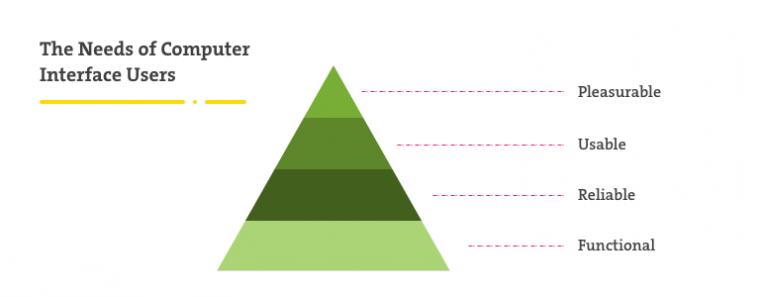As a website owner, you’ve probably invested a lot of time and money in development, UI design, marketing etc. But what was the last time you asked yourself questions like: “How easy is for users to find what they are looking for? What frustrates them? How do they feel and will they come back?”
Online shopping went through a dramatic transformation in the last few years. The responsive design is adopted and it is needless to say mobile is important in 2018, so what’s the next big thing?
UX – one of the contributors to competitive advantage
There are so many stores in crowded online space which look very similar, sell similar products with similar prices and offer the same shipping and payment options. Shoppers have more choice than ever, and as a result, they’ve become spoiled and expect more from online shopping. They are conducting extensive research before making a final decision and even the smallest obstacle on your site is enough to make them leave and go elsewhere.
The act of shopping is not enough anymore and only the store owners who understand the preferences and behaviors of their users will succeed. It is actually fairly simple – observe users, ask them directly how they feel and what they want, and provide them with the better user experience.
Many website owners are already familiar with the importance of user experience in eCommerce, so why don’t they invest in this area like they invest in marketing or new features? It is actually very understandable, UX is hard to measure and we know eCommerce people like to measure everything. If we invest $1000 in ads, we know exactly how much was a return on investment, and if we solve user’s problems and improve user experience, how much did we earn from that? How to define a UX budget if we can’t see the numbers? These are all legit questions, although the value of UX is crystal clear, if we don’t specify what do we expect from UX investments, it is impossible to determine the business value and make informed business decisions.
Measuring the value of UX
Investing in user-centered design and user experience is beneficial for your users and everyone is aware of the benefits of making designs more intuitive, but how beneficial those improvements are for your business? Is it possible to quantify and measure the return of UX investment? This question was asked 20-30 years ago, since when UX was mentioned for the first time, and probably will be relevant forever.
In each article on this subject, you’ll find a quote “every dollar invested in UX returns $10 to $100.” according to a study done by Forrester. That sounds great, but they analyzed
the top 10 companies leading in customer experience and it is nonsense that everyone who invests in UX can expect to have a 9,900% ROI. So what can you expect?
Before we try to quantify anything let us remind ourselves of the UX definition:
“User experience” encompasses all aspects of the end-user’s interaction with the company, its services, and its products.”
– Don Norman
As we can see UX is a very broad term and it is hard to quantify anything without going deeper. When talking about measuring return on investment of UX in eCommerce, we should detect what are the factors that influence UX on online stores and this is greatly illustrated by Aarron Walter’s hierarchy of user needs:

Investing in UX affects mostly the top of this pyramid. UX efforts will result with a more usable store and more pleasurable experience (if a site is functional and reliable). To measure the business value of these investments we have to detect which metrics UX efforts affect.
UX designers spend a lot of time on research and analysis as their main goal is to understand users, get insights into user behavior and recommend improvements. Typical tasks include user surveys, creating personas, user journeys, wireframes, prototypes and user testing.
All that work is a starting point for UI design modifications and the final changes are made directly on the site, so UX improvements greatly affect metrics like conversion rate, drop off rate, support cost per user and Single Usability Metric (represents the majority of variation in four common usability metrics used in usability tests: task completion rates, task time, satisfaction and error count). As we can see most of these improvements can be quantified.
Additionally, UX efforts also affect intangibles like satisfaction, joy, and delight. Those are not easy to quantify but are still extremely important. Users who experience delight and satisfaction are more likely to become loyal, recommend our store to others and return.
Conclusion
To sum up, if try to calculate a classic ROI of UX investment (Gain from Investment – Cost of Investment) that won’t be so easy because we have a mix of different units, investment measured in money and intangibles like satisfaction, more efficient use etc which are not expressed explicitly. However, investing in UX offers many concrete quantitative benefits for your online business and we can say that it is easier to measure benefits of UX investments than evaluate how much money you have lost because of the poor usability and bad user experience.
Interested in providing the superior experience to your users?
As already mentioned, investing in UX results in a more usable store and a pleasurable experience, which directly impacts conversion rates and improves customer satisfaction. Start by leveraging our UX & Usability audit, which analyzes how users interact with a website and provides a list of recommendations for improvements based on research and data. Then you can head to our Design Services and see how can we design your store with usability in mind!



